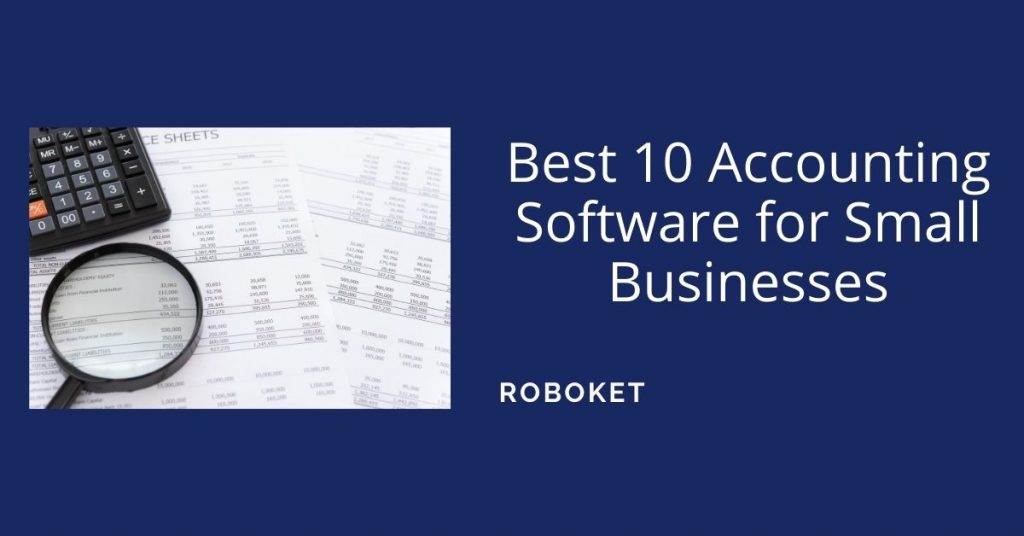As a leader, one of your aims is to motivate others in order to attain certain goals and objectives. There are various leadership styles that you can utilize as a business manager. People tend to choose the leadership models that they feel will work best in the setting they are in.
For example, in an enterprise, one of your duties as the boss may be to direct your employees towards implementing a strategy that can save time in the production process. For that, one of the leadership approaches that you may adopt could be to relate with the key workers that can make this strategy possible on a personal level.
It will be a good idea to know multiple leadership models so that you can make a good choice about which one to implement. Right now, you may be using one or two out of the ones that will be discussed in this guide. What is your leadership style? What are the types of leadership styles that you can adopt? Read further to find out.
Table of Contents
8 Most Common Leadership Styles
Leadership models determine how leaders relate with others. For example, they affect aspects like communication, motivation, conflict resolution, teamwork, etc. Not having the required skills to implement such models can be detrimental. Some business leaders do not have the adequate talent required to lead their team. In a Forbes study, it was discovered that only 14% of Chief Executive Officers (CEOs) have the necessary skills.
The type of leadership styles in management that you decide to adopt will have an effect on the overall growth of your company. With that in mind, you should try to understand each of the 7 types of leadership styles below:
- Autocratic leadership
- Bureaucratic leadership
- Coaching style leadership
- Democratic leadership
- Laissez-faire leadership
- Strategic Leadership
- Transactional leadership
- Transformational leadership
1. Autocratic Leadership
This is the opposite of the democratic leadership style because, here, the opinions of the followers or workers are not put into consideration. What happens is that the leader gives strict directives that everyone else must follow. For example, a business manager might decide to change the company’s accounting software without seeking to know what the employees think about it.
Autocratic leadership styles in management are not advisable because of their negative impact on employee relations. Such a work environment is not conducive to employee motivation, and it will lead to the loss of workers in the long run. Worse still, you may lose high-quality talent that were instrumental in the rapid growth of the business in the past. You have to be open to the opinions of others.
2. Bureaucratic Leadership
This is less rigid than autocratic leadership because, here, the leaders try to seek the views of their employees. The difference is that they may disregard the opinions of others if it goes against the normal way of doing things in the organization.
The leader adheres strictly to the existing corporate policies and does not welcome innovation easily. Why? This is because they believe that successful (past and existing) policies and strategies do not have to be changed. They may see the implementation of new ideas as economically risky and time-consuming. Entrepreneurs should see bureaucratic leadership as a hindrance to business growth.
3. Coaching Style Leadership
Here, leaders act like the coaches of sports teams. They are able to relate with their employees on a personal level by understanding their strengths and weaknesses—and then providing guidance. They also ensure that their workers become great “team players” due to the belief that every employee’s best effort is important to the overall progress of the organization.
You will find out that coaching style leadership is similar to democratic and strategic leadership in some ways. The difference is that it involves putting more focus on the improvement of each and every employee in the establishment. This is more effective than the two types of leadership styles that have been discussed so far—autocratic and bureaucratic leadership.
Business managers that utilize this style ensure that each team member specializes in an aspect of work that they are more skilled in. This does not stop them from encouraging employees to learn new things. The leader guides team members in skill development with the aid of tests and the assignment of new roles.
4. Democratic Leadership
A democratic government accommodates the input of every member of the society directly or indirectly, right? Definitely, the same principle applies to a company’s democratic leadership. Decision making involves listening to what others think about a particular matter and then reaching a collective agreement.
Team members may deliberate on the step to take, while the leader acts as a kind of moderator. The final decision is still up to the boss. For example, board meetings can involve the sharing of opinions between members, while the chief executive officer (CEO)—who may also be the owner of the company—can choose what he or she feels is the best view. Another example is a voting process by the simple method of raising hands in such meetings.
The effectiveness of the democratic leadership style cannot be overemphasized. Collective decision making gives every worker in the organization an individual sense of relevance. Each employee will see the growth of the organization as a personal win.
5. Laissez-Faire Leadership
Basically, “laissez faire” is a French term that means non-interference in the actions of others. The literal translation is “let them do”. By now, you should already have an idea of what these statements might be implying. Out of all the types of leadership styles, this one allows for very free decision making among the employees.
Laissez-faire leadership means that the leader gives employees the free will to make most decisions on their own. There is complete trust in the workers’ abilities. This might work well in a new business venture or startup.
It might not be a good idea for business growth because the employees are not challenged to give their very best. Business managers will have to show more interest in the decisions that each team member makes, so as to ensure efficiency.
6. Strategic Leadership
Strategic leadership might be the solution to the disadvantages of laissez-faire leadership. The business manager tries to ensure that everything is always in order for steady growth. He or she assesses every employee’s efforts regularly for the sake of optimum efficiency. Of course, solutions will be sought in order to take care of the lapses discovered in any area.
Many entrepreneurs adopt this style because they feel that it is ideal for a large, diverse workforce. Nonetheless, a problem that may arise could be the inability to monitor the activities of all employees adequately and keep them on the same page.
7. Transactional Leadership
Incentives are a way for business managers to ensure that the employee gives his or her best in performing tasks. They can be more effective if a leader decides to start rewarding employees impromptu without stating prior conditions. In a study, it was discovered that nearly 80% of workers resigned from their jobs because they were underappreciated.
Transactional leadership is seen as an effective motivator. For example, a sales representative may be given a target to sell a specified quantity of products by the end of the month. A bonus will be promised for achieving that target in a shorter time or selling far more than the required quantity before the deadline.
8. Transformational Leadership
Transformational leaders are always open to innovation. They are future-conscious with the way they constantly communicate the vision and the mission of the organization to their employees. Research showed that almost 70% of the respondents preferred to work for a company whose mission and vision they believed, instead of one that pays them much.
There is flexibility when it comes to making changes for the betterment of employee performance. The leader tries to challenge workers to perform to the best of their abilities, regardless of the specified tasks that have been assigned to them for a particular time frame (a week, a month, etc.).
The success of a transformational leader is dependent on providing guidance and constantly communicating with each employee. It requires a high level of dedication from the manager. This is one of the leadership styles in business that helps companies achieve growth quickly. It is highly recommended because it helps to motivate team members to challenge themselves and actualize their potentials.
How to Assess Your Leadership Style
Now that you are familiar with 8 different types of leadership styles that are commonly practiced, you can try to understand how to assess yours. You may realize that you are practicing two or more of the above. You may even be using a combination of different leadership styles. It depends on your industry and the type of management problems that you are trying to solve.
Now, let’s get on with it. Are you familiar with the S.A.R.I formula? This simple formula is given below:
- S – Situation or task
- A – Action
- R – Result
- I – Interesting features
You may watch the following video for a better understanding of the S.A.R.I formula if this is the first time that you are learning it about it. This will help you in conducting a more in-depth assessment.
Basically, this method involves thinking of an example of a previous situation that you were in or the task that you were trying to get done. For example, seeking a way to save time in the production process.
The next thing would be to remember the steps (actions) you took. As an example, ask yourself about the way you set about finding solutions to that problem. Did you ask for your employees’ opinions, or you instructed them without consultation?
By now, you may have started linking some similarities to any of the 8 styles discussed earlier. Proceed to evaluate the results of your actions. How did your employees react to the actions you took? Did it affect employee relations negatively or positively?
Pointing out the interesting features of the answers to the questions asked will help you arrive at the ultimate answer to this question: What is your leadership style? All you have to do is to link the similarities shared with the leadership styles explained earlier.
Choosing Your Leadership Style
Knowing which of the different types of leadership styles to adopt is an issue that a leader will have to ponder about at the onset of occupying a new position. In fact, you may already have a choice in mind before fulfilling the requirements for such a position.
You need to be able to adapt to any situation with the right model in order to ensure effective leadership. The process will be easier if you have already undergone a leadership style assessment.
With the different leadership styles that have been discussed in this guide, you will be making an informed decision. You will know which skills you need to develop for a certain style. As the saying goes: practice makes perfect. You have to practice until you become accustomed to each model that you decide to adopt. It would not be a good impression on your subordinates or employees if it seems like you are “faking it”.
Try combining two or more leadership styles, and see how effective they are when practiced simultaneously. This may come in handy in the case of a workforce that is characterized by much diversity. Flexibility is crucial to leadership success.
Related Articles:
Conclusion
As a business owner, you may be wondering about which of the types of leadership styles that will be suitable for your industry. You may find transformational leadership most appealing because of its advantages to employee relations and rapid growth. The democratic leadership style maybe your second preference, but it has its cons.
Nonetheless, when it comes to leadership styles in business, there is none that can be used in all circumstances. You need to learn how to switch to other styles when necessary. Flexibility in adopting different leadership styles from time to time is important because there is a vast range of scenarios that may play out. It is a skill that must be learned if you want to be a successful leader.






5
Pingback: 99 Inspirational Famous Quotes to Inspire You the Most - Roboket Blog
Pingback: 5 Conflict Management Styles With Pros and Cons - Roboket Blog
Pingback: Brand Style Guide Example and How to Create Your Own - Roboket Blog